ASUS has a diversified portfolio of laptop products that cater to a variety of users. Hardcore gamers usually look toward the company’s ROG lineup while consumers that are in need of a machine for professional and creative tasks can opt for the ZenBook or VivoBook series. The ZenBook Pro 16X OLED that I have with me for review is priced at Rs 2,49,990 and is clearly a device meant for users with deep pockets.
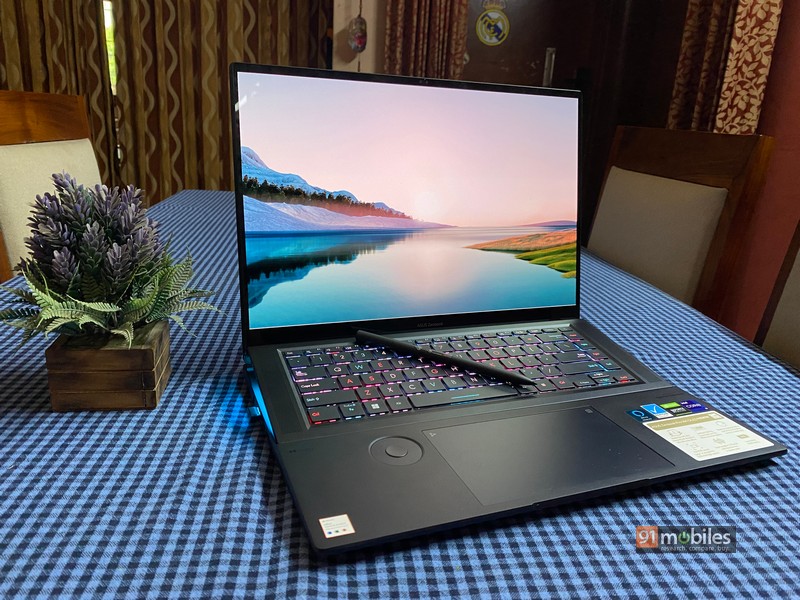
From a 4K OLED panel with touchscreen support to the 12th-gen Intel i9 CPU and NVIDIA’s RTX 3060 GPU, the ZenBook Pro 16X appears as a device that can serve multiple purposes that oscillate between gaming and creative applications. Let’s learn more about this loaded laptop via a detailed review.
Table of Contents
Build, design, and display
- The ZenBook Pro 16X is definitely not a light machine, and that’s not just because of the heavy-duty internals housed inside. The chassis is made from aerospace-grade 6000 series aluminium alloy, giving the entire laptop a very rigid construction. You couldn’t bend the chassis even if you tried.
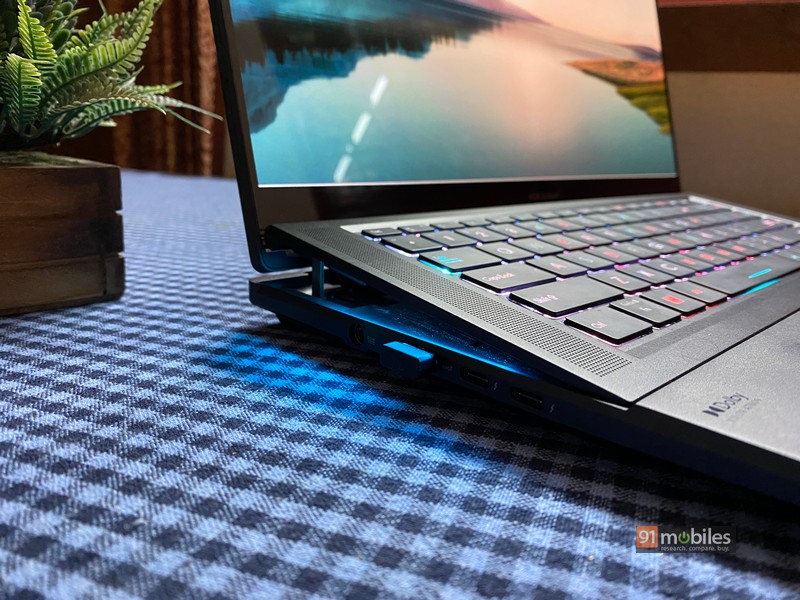
- The ZenBook Pro has a very unique design feature which I initially thought is susceptible to damage although ASUS assures me it isn’t. When the lid is opened, the keyboard is raised from the body and rests on two levers present on either side, creating a kind of chamber underneath. This serves a couple of purposes of which the more important is better thermal airflow across the system. Secondary functionalities include a more comfortable typing experience on the inclined keyboard and better sound output. ASUS says that it has tested this AAS (Active Aerodynamic System) more than 30,000 times without registering any problems.
- The ASUS Dial, present previously on the Pro Art Studiobook, has been positioned just below the keyboard. It follows an iPod Click wheel-like design with a physical button in the centre around which a capacitive wheel is present. The Dial is customisable in the ProArt Creator Hub application and can be used to control a variety of functionalities all the way from volume to colour grain on a video. However, the palm rejection on it is not the best, and while typing the ASUS Dial can randomly pop up on the screen, disturbing your workflow.
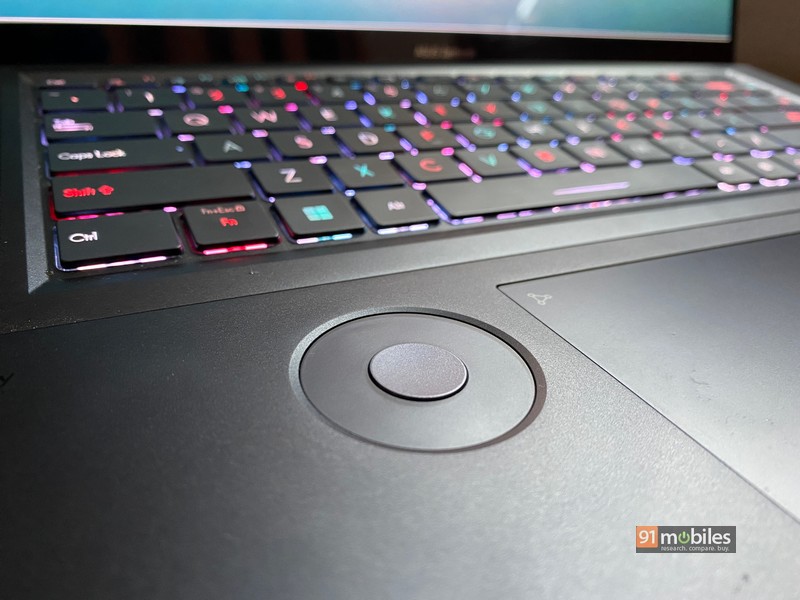
- The ZenBook Pro 16X OLED weighs just under 2.5kgs and has a thickness of about 17mm, both of which impact its portability. As for durability, the laptop boasts US MIL-STD 810H military-grade rating for extreme weather conditions and temperatures, although it’s likely none of us is actually going to use the ZenBook Pro outside a closed environment.
- The raised keyboard also has an RGB underglow on either side which does look quite cool in a dimly lit room. There is only one colour option present on the device which is called Tech Black. ASUS has done a supreme job of making the ZenBook Pro a stylish yet utilitarian device and my overall impressions of the design are more than positive.
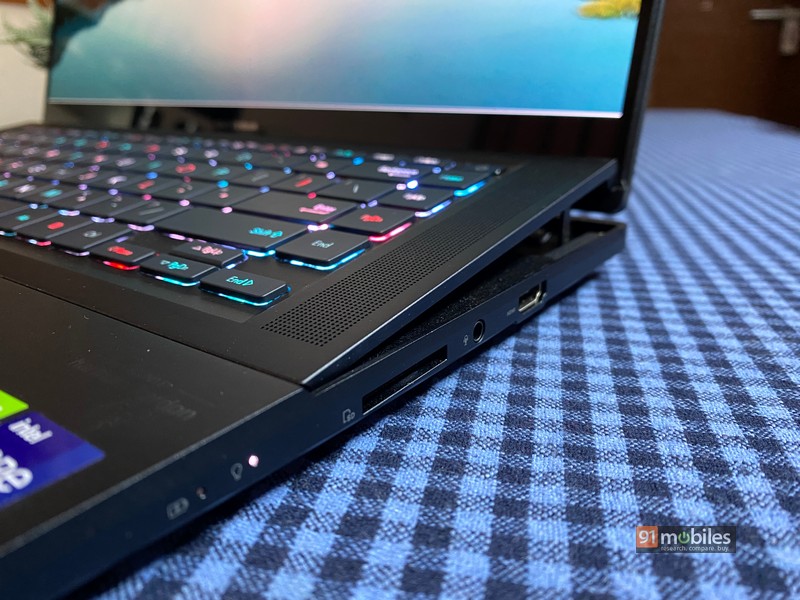
- Talking about the ports, the ZenBook Pro offers a very wide array of connectivity options. There’s a USB 3.2 Gen 2 Type-A port along with two Thunderbolt 4 slots that both support power delivery and Display Port functionality. An HDMI 2.1 slot is present on the right beside the 3.5mm headphone jack and SD Express 7.0 Card reader. Standard wireless connectivity options are present in the form of Wi-Fi 6 and Bluetooth 5.0. A webcam is located on the top bezel to facilitate facial unlock via Windows Hello.
- The display present on the laptop has mostly been designed keeping creative professionals in mind. You get a 4K OLED panel that has a 16:10 aspect ratio, 60Hz refresh rate, and 550nits of peak brightness. The screen is Pantone validated, as expected, and has a 100 percent coverage of the DCI-P3 colour gamut alongside a 1,000,000:1 contrast ratio. Add to that full touchscreen capability and stylus support, and you have the ultimate creator machine. Watching Interstellar, on this Dolby Vision and HDR-capable screen transcended the visual experience like no other laptop display I’ve seen.
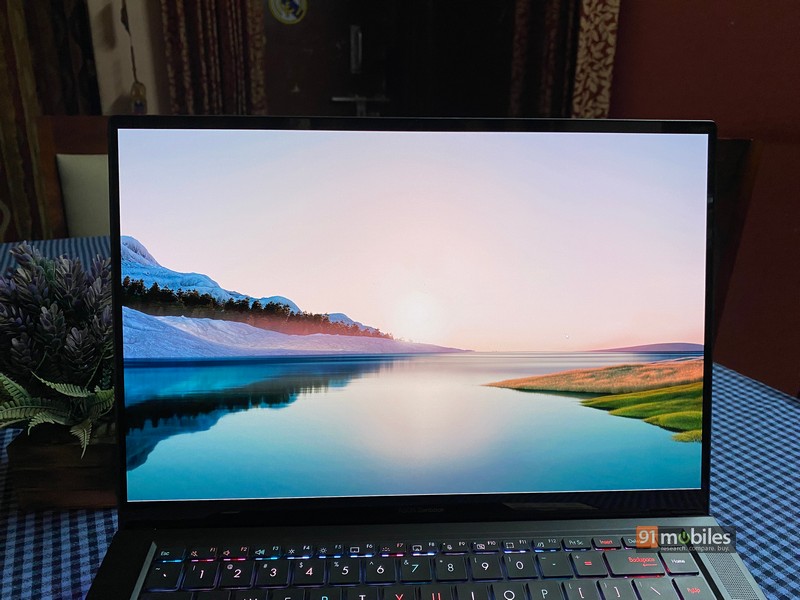
- The OLED’s deep blacks accentuate the excellent colour calibration on the panel while TÜV Rheinland certification means less stress on my eyes. This is a screen which you have to see to believe. As for the touchscreen, its response was acceptable and I had a lot of fun doodling on the display with the ASUS Pen 2.0. However, since the hinge doesn’t allow 360-degree movement, the stylus applications are a bit hampered. ASUS is really trying very hard to compete with the current lineup of MacBook Pro 14 and 16-inch and during my initial viewing of the ZenBook Pro’s screen, I have to say that the company is on the right track.
Keyboard and trackpad
- While the keyboard deck rises up from the chassis, its layout is the standard six-row chiclet-style arrangement seen very often on ASUS laptops. On the backlighting front, you get what ASUS claims to be the first White RGB loadout which provides a perfectly accurate White tone on the keys. In my opinion, the lighting does not seem very different from the sea of RGB-lit keyboards on the market. You can customise this lighting for each key or set a pattern for the entire keyboard in the MyAsus app.
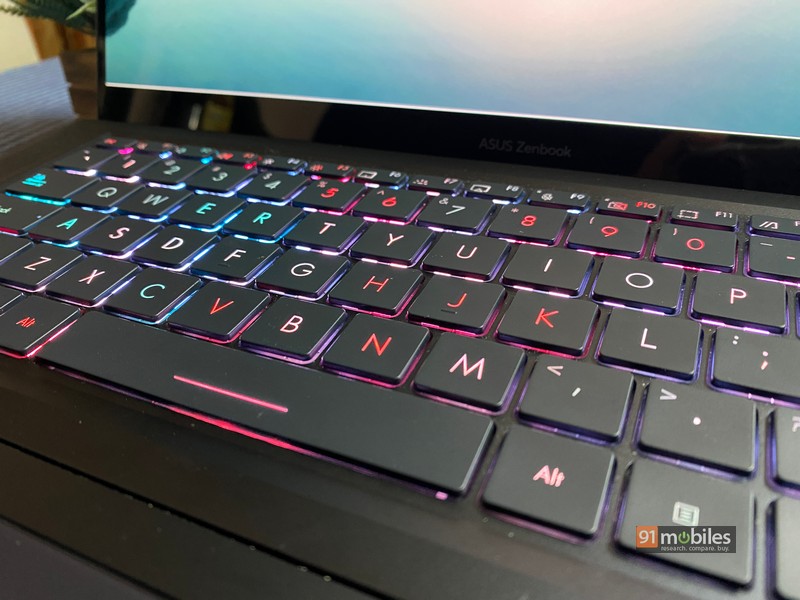
- The 1.4mm of key travel is perfect for my typing needs and there is also a subtle 0.2mm dish-shaped indentation on each key. There’s also a nifty feature that sets the priority mode on the function key row depending on what tasks you are doing.
- The trackpad on the ZenBook is perhaps the largest you’ll see on a laptop outside the 16-inch MacBook Pro lineup and it’s every bit as good if not better. For starters, the trackpad, with a single click, also doubles up as the Numpad for some quick calculations. Asus has also implemented LRA technology to give precision to the haptic feedback while clicking.
- As for the surface, there is an anti-fingerprint coating that deters any smudges and maintains a clean look. All said and done, I still prefer using an external mouse instead to get my work done.
Performance and battery life
- ASUS is offering the 12th-gen Intel i9 12900H processor on the ZenBook Pro 16X OLED review unit that I have although there is also an i7 version. You can already guess that the laptop performs exceedingly well in any CPU-related task at hand. Since I’m not using the Adobe suite of apps like Photoshop, Lightroom, Premier Pro, or applications like DaVinci Resolve in my line of work, my observations of the device’s performance revolve mainly around Chrome and Microsoft Office usage.
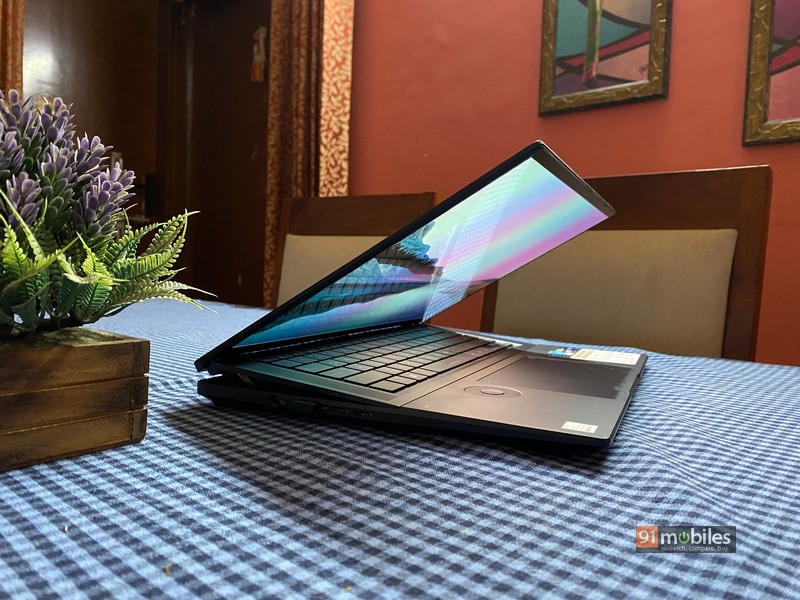
- I had about 20 Chrome tabs open across three windows while simultaneously running Spotify, Excel, and a couple of other programs, and at no point did I see a stutter or lag. Benchmark numbers also back up this claim with Cinebench R23 churning out a very healthy score of 15,124 on the multi-core test. For work-related tasks, PCMark 10 provided a score of 7,012 which is also quite good.
- As for memory requirements, the laptop comes with 32GB DDR5 RAM which is non-upgradable but I feel that for almost all tasks that should be enough. There’s also 2TB of M.2 NVMe PCIe 4.0 Performance SSD present and in CrystalDiskMark’s read/write test, I got splendid speeds of 6,756MB/s and 4,871MB/s respectively.
- Thermally, the noise profile of the fans generally is quite dim although you can crank up the speeds for better performance in the MyAsus app. ASUS says that the AAS system allows for 30 percent more airflow and I have no reason to doubt it since the device runs quite cool even when I’m running GPU-intensive titles on it. Also, there are the two IceBlades fans with 3D curved blades that dissipate heat more effectively.
- A powerful GPU is necessary for doing tasks like exporting 4K videos or RAW footage. The ZenBook Pro 16X comes with NVIDIA’s RTX 3060 discreet graphics that has a TDP of 95W when Dynamic Boost is enabled. I threw a slew of AAA titles at the device and the frame rate count didn’t disappoint me.
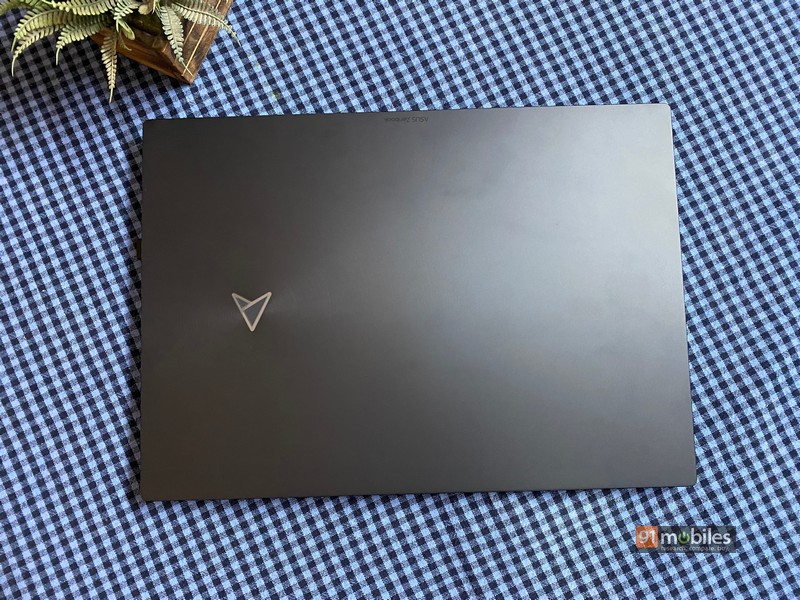
- On the Shadow of the Tomb Raider benchmark, the ZenBook Pro 16X got 86fps at the Highest settings and 1080p resolution. Left 4 Dead 2 at the highest graphics kept the frame rate between 140-150fps. The lack of NVIDIA G-sync did see some tears in the frame rate but not so much as to cause any concern. CS: GO also ran at a cool 140fps alongside Valorant and pretty much any other lower intensity title. It’s imperative to state that any graphical title when running at 4K resolution will bring the system down to its knees.
- As far as audio goes, the ZenBook Pro 16X has a six-speaker setup which consists of two tweeters and four woofers. I don’t think I’ve heard better audio coming from a laptop, be it any Windows machine or a MacBook Pro. The sound quality is extremely crisp with a deep bass resonating underneath that provides a very wide soundstage. At max volume, the audio never crackles and delivers crystal clear dialogues when watching a movie.
- The 1080p webcam has decent picture quality although the more impressive feature is the IR-based face authentication which detects, using a separate ToF sensor, when my face is in front of the screen and unlocks the laptop instantly, even when it’s on Sleep mode.
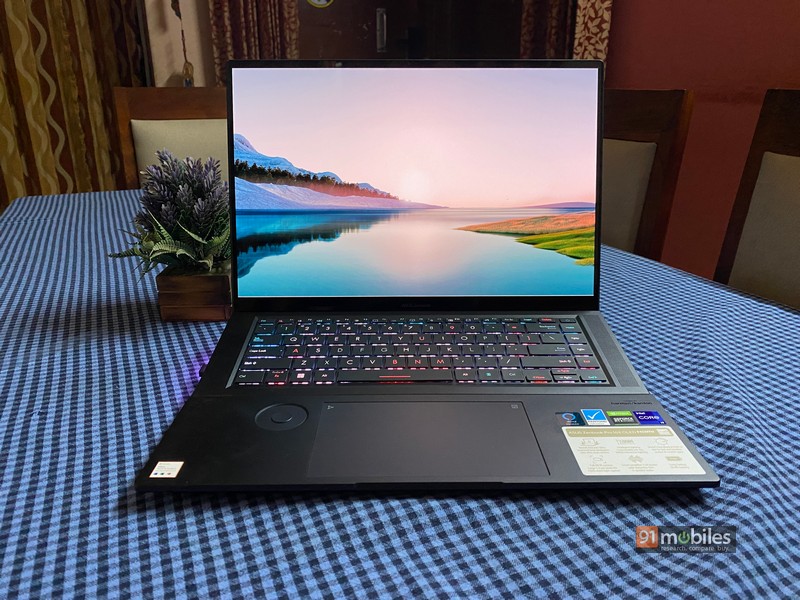
- The battery housed inside the ZenBook Pro 16X is a 96Whr cell which is pretty sizeable for any laptop. During my usage, wherein I extensively watched a lot of OTT content, the battery gave up after about 7 hours of screen-on time, which I consider to be ample, especially with the hardware onboard. The charger provided with the box can juice up the laptop at 200W and it takes about 2 hours to completely fill up the battery.
Final Verdict
Most of my friends who are into filmmaking, cinematography, photo editing, and so on, have traditionally been MacBook users. The ASUS ZenBook Pro 16X OLED genuinely has the ability to make them switch. I did show the laptop to one of my friends and he was in awe of the display and audio quality on the ZenBook Pro. Pricing plays a key role here and the laptop’s hefty starting cost of Rs 2,49,990 can put a big dent in your wallet.
However, when compared to the MacBook Pro 16-inch with the M1 Pro chipset, you are getting a much better deal in just about every aspect of a laptop experience, except perhaps the battery life. The ZenBook Pro 16X OLED has all the elements to make it the portable creative machine of choice for most use cases.
Editor’s rating: 4 / 5
Pros
- Excellent 4K OLED display
- Class-leading speakers
- Sturdy construction
- Decent performance
- Snappy facial unlock
Cons
- Expensive
- Poor palm rejection on the ASUS Dial


